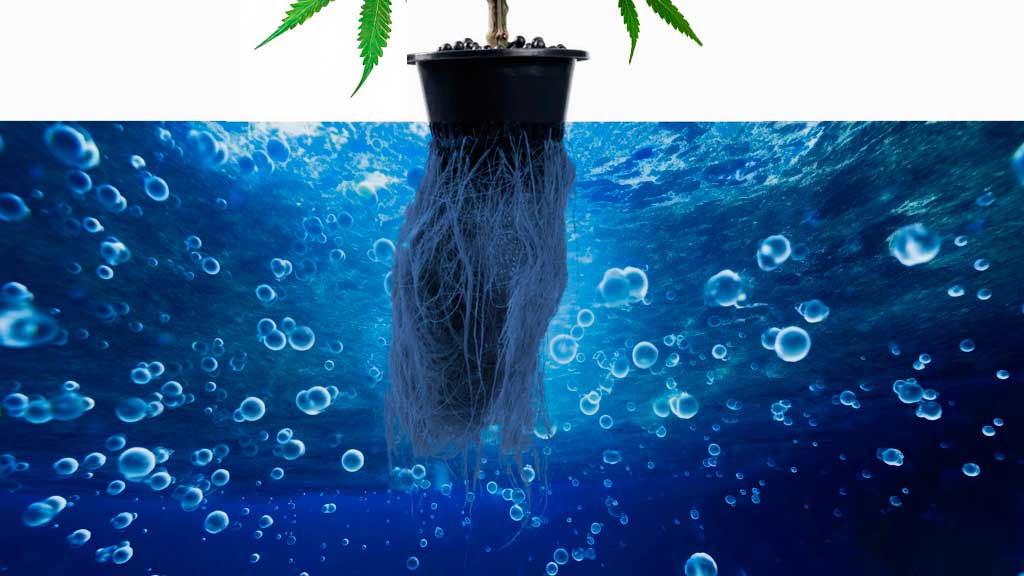Cultivating plants in water might seem unconventional, yet it’s not only feasible but a thriving technique embraced by many cultivators. Deep Water Culture (DWC) represents a hydroponic approach wherein plants enjoy consistent access to water, nutrients, and crucially, oxygen. The pivotal element lies in a straightforward yet essential process: aeration.
Aeration: Its Importance and Mechanism
Even for amateur gardeners, the significance of aeration is likely evident, whether tending to plants in soil or within a recirculating hydroponic setup. Essentially, aeration augments the dissolved oxygen levels in the water. Despite its critical nature, this facet often eludes indoor gardeners’ attention. Nevertheless, every plant’s roots necessitate dissolved oxygen for respiration and nutrient assimilation. Inadequate oxygen severely hampers root permeability, impeding their capacity to absorb nourishment and water.
Dissolved oxygen concentration is typically quantified in milligrams of gas per liter of water (mg/L), equating to parts per million (ppm). Hence, 1 mg/L equals 1 ppm.
Indications of Oxygen Deficiency
Identifying oxygen deficiency can prove challenging, primarily because symptoms mimic those of under- or over-watering, such as drooping leaves. Signs typically manifest in the afternoon when temperatures peak. Intriguingly, the maximum dissolved oxygen content correlates with water temperature – colder water harbors more dissolved oxygen. An adequately aerated solution at 20°C can retain roughly 10 to 11 ppm, whereas at 30°C, it diminishes to about 7 ppm. Concurrently, this period coincides with peak photosynthesis rates and dwindling dissolved oxygen availability, leading to evident signs of oxygen deficiency in traditional hydroponic systems – a scenario averted by the HydraMax system.
Severe oxygen deficiency can curtail photosynthesis significantly, impede carbohydrate transfer, hinder growth, cause root desiccation and discoloration, and result in visible leaf mineral deficiencies.
How Does DWC Operate?
Plant roots can satisfy their oxygen requirements via atmospheric O2 or dissolved O2 in the nutrient solution. To sustain respiration and facilitate nutrient conversion, a dissolved oxygen level exceeding 4 to 5 mg/L (4 to 5 ppm) is imperative. Notably, swift root growth occurs in water boasting a dissolved oxygen concentration surpassing 9 mg/L (9 ppm).
Thus, DWC systems prove highly effective when maintaining elevated dissolved oxygen levels.
How do you increase the dissolved oxygen content?
Oxygen dissolves at the surface of the water and aeration occurs naturally in systems where pumps are used to circulate the water. In contrast to deep water culture (DWC), the better way is recirculating deep water culture (RDWC), i.e. a system in which a pump ensures water circulation and even distribution of the nutrients, as with the HydraMax system from Green Cult. This is where the patented Hydra-Max circulator comes into play. Using the same pump that makes water circulation possible, the circulators in each HydraMax container produce countless tiny oxygen bubbles that saturate the water with more oxygen than the roots can process. These guarantees accelerated growth.
The best way to increase the dissolved oxygen content is to use a method that increases the water surface.
By filtering air bubbles through the water, the surface area of the water that comes into contact with the available oxygen is significantly increased. The water surface is not limited to the top but can be anywhere the air meets the water.
Surprisingly, creating large bubbles is a fallacy as it provides the least surface area per liter of air added to the water. It is much more productive to use an option that produces small, champagne-like bubbles. The HydraMax circulator thus becomes the growth engine of your plants, which you can easily recognise by the fact that the roots grow into large structures in a short time and can therefore absorb nutrients extremely efficiently. For this reason, you can generate large yields within 12-13 weeks.

